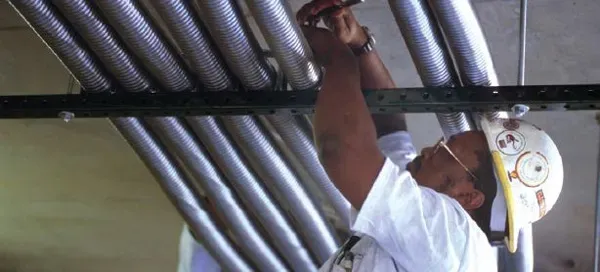Dec . 23, 2024 17:38 Back to list
wafer style check valve
Understanding Wafer Style Check Valves A Comprehensive Overview
Wafer style check valves are an essential component in various industrial applications, particularly in fluid handling systems. These valves are designed to allow fluid to flow in one direction while preventing backflow, ensuring the efficiency and safety of piping systems. Their compact design, lightweight characteristics, and ease of installation make them a popular choice among engineers and system designers.
What is a Wafer Style Check Valve?
A wafer style check valve is a type of inline valve that has a thin body structure, typically installed between two flanges in a piping system. Unlike traditional check valves, which can be bulkier and require more space, wafer check valves are streamlined, making them ideal for installations with space constraints. The semi-disk design of the closure mechanism enables them to open and close efficiently, responding to changes in pressure and flow.
Design and Materials
Wafer style check valves can be constructed from a variety of materials, including stainless steel, ductile iron, and plastic, depending on the application requirements. The choice of material is crucial as it affects the valve’s durability, resistance to corrosion, and overall performance in different environments. For instance, stainless steel is preferred for applications involving corrosive fluids, while ductile iron may be used for more standard applications.
The design of these valves typically includes a spring-loaded disk or a gravity-operated flap that acts as the closure mechanism. When the fluid flows in the forward direction, the disk is pushed open, allowing the flow to pass. However, if the flow reverses, the disk quickly shuts against the seat, preventing any backflow.
Advantages of Wafer Style Check Valves
1. Space Efficiency One of the most significant benefits of wafer style check valves is their compact size. They are particularly advantageous in systems with limited space, allowing for more flexible piping layouts without sacrificing functionality.
wafer style check valve

2. Weight Reduction The lightweight nature of wafer valves makes them easier to handle and install. This not only reduces labor costs during installation but also lessens the load on supporting structures.
3. Cost-Effectiveness Due to their simple design and reduced material usage, wafer style check valves tend to be more affordable than traditional check valves. This cost efficiency can be a critical factor in large projects or budgets constrained by financial considerations.
4. Low Maintenance Requirements Once properly installed, wafer check valves generally require minimal maintenance. The absence of complex moving parts reduces the risk of mechanical failure, contributing to long-term reliability.
5. Versatile Applications Wafer check valves find applications across various industries, including water treatment, petroleum, food processing, and HVAC systems. Their versatility makes them suitable for handling a broad range of fluids, including gases, liquids, and slurries.
Installation Considerations
When installing wafer style check valves, it is essential to ensure proper alignment between the valve and the flanges to prevent leaks and ensure optimal performance. The use of gaskets is also recommended to create a tight seal. Additionally, it is critical to consider the direction of flow when installing the valve; an incorrect installation can lead to system failures and costly repairs.
Conclusion
In conclusion, wafer style check valves offer a combination of efficiency, cost savings, and durability that makes them an excellent choice for many fluid handling applications. Their unique design allows for effective backflow prevention while maintaining a compact and lightweight profile. As industries continue to seek ways to optimize systems and reduce costs, the popularity of wafer style check valves is likely to grow. Engineers and system designers should consider these valves for new projects or when upgrading existing systems to enhance performance and reliability. As with any component, understanding the specific needs of the application and selecting the appropriate materials and designs will be key to successful implementation.
Share
-
Reliable Wafer Type Butterfly Valves for Every IndustryNewsJul.25,2025
-
Reliable Flow Control Begins with the Right Ball Check ValveNewsJul.25,2025
-
Precision Flow Control Starts with Quality ValvesNewsJul.25,2025
-
Industrial Flow Control ReliabilityNewsJul.25,2025
-
Engineered for Efficiency Gate Valves That Power Industrial PerformanceNewsJul.25,2025
-
Empowering Infrastructure Through Quality ManufacturingNewsJul.25,2025